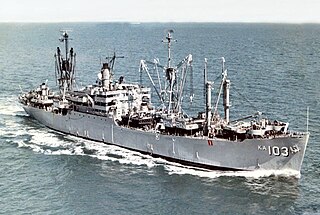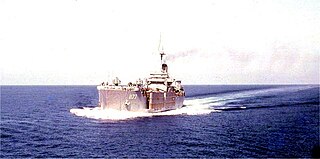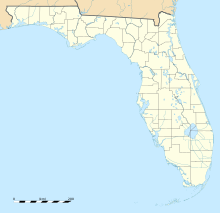
Wreck diving is recreational diving where the wreckage of ships, aircraft and other artificial structures are explored. The term is used mainly by recreational and technical divers. Professional divers, when diving on a shipwreck, generally refer to the specific task, such as salvage work, accident investigation or archaeological survey. Although most wreck dive sites are at shipwrecks, there is an increasing trend to scuttle retired ships to create artificial reef sites. Diving to crashed aircraft can also be considered wreck diving. The recreation of wreck diving makes no distinction as to how the vessel ended up on the bottom.

An artificial reef (AR) is a human-created freshwater or marine benthic structure. Typically built in areas with a generally featureless bottom to promote marine life, it may be intended to control erosion, protect coastal areas, block ship passage, block the use of trawling nets, support reef restoration, improve aquaculture, or enhance scuba diving and surfing. Early artificial reefs were built by the Persians and the Romans.

USS Point Defiance (LSD-31) was a Thomaston-class dock landing ship of the United States Navy. She was named for Point Defiance, a location in Pierce County, Washington, the site of a military reservation established by the U.S. Government in 1866. She was the second ship assigned that name. The construction of the first ship, Casa Grande-class dock landing ship Point Defiance (LSD-23), was canceled on 17 August 1945.

USS Hammerberg (DE-1015), a Dealey-class destroyer escort, was a ship of the United States Navy named for Navy diver Francis P. Hammerberg (1920–1945), of Daggett, Michigan, who was awarded the Medal of Honor posthumously for rescuing two fellow divers from a wreck in Pearl Harbor.

A United States Navy diver refers to a service personnel that may be a restricted fleet line officer, civil engineer corps (CEC) officer, Medical Corps officer, or an enlisted who is qualified in underwater diving and salvage. Navy divers serve with fleet diving detachments and in research and development. Some of the mission areas of the Navy diver include: marine salvage, harbor clearance, underwater ship husbandry and repair, submarine rescue, saturation diving, experimental diving, underwater construction and welding, as well as serving as technical experts to the Navy SEALs, Marine Corps, and Navy EOD diving commands.

USS Rankin (AKA-103/LKA-103) was a Tolland-class attack cargo ship in service with the United States Navy from 1945 to 1947 and again from 1952 to 1971. She was finally sunk as an artificial reef in 1988.

USS Muliphen (AKA-61/LKA-61) was an Andromeda-class attack cargo ship in service with the United States Navy from 1944 to 1970. She was sunk as an artificial reef in 1989.
USS Terrebonne Parish (LST-1156), originally USS LST-1156, affectionately nicknamed the "T-Bone" by her early crew, was a Terrebonne Parish-class tank landing ship built for the United States Navy in 1952. The lead ship in her class, she was named for Terrebonne Parish, Louisiana, the only U.S. Navy vessel to bear the name. The ship was later transferred to Spain and renamed Velasco (L-11), and was scrapped in 1994.

USS Lorain County (LST-1177) was a De Soto County-class tank landing ship built for the United States Navy during the late 1950s. Named after Lorain County, Ohio, she was the only U.S. Naval vessel to bear the name.

USS Kittiwake (ASR-13) was a United States Navy Chanticleer-class submarine rescue vessel in commission from 1946 to 1994.

USNS General Hoyt S. Vandenberg (T-AGM-10) was a General G. O. Squier-class transport ship in the United States Navy in World War II named in honor of U.S. Army Chief of Engineers Harry Taylor. She served for a time as army transport USAT General Harry Taylor, and was reacquired by the navy in 1950 as USNS General Harry Taylor (T-AP-145).

USS Mizpah (PY-29) was a United States Navy patrol yacht. Constructed in 1926, the vessel was constructed as the pleasure yacht Savarona. In 1929 it was renamed Allegro and then Mizpah for use on the Great Lakes. The vessel was acquired by the United States Navy in 1942 and converted to a warship and commissioned the same year. Mizpah served as a convoy escort along the United States East Coast before becoming a school ship in 1944. Following the end of the war, the vessel returned to private operation in 1946 until 1967 when Mizpah was laid up with a broken crankshaft at Tampa, Florida. An attempt to save the ship proved futile and Mizpah was scuttled off the coast of Florida as an artificial reef in 1968. The wreck is now a popular dive site.

Sinking ships for wreck diving sites is the practice of scuttling old ships to produce artificial reefs suitable for wreck diving, to benefit from commercial revenues from recreational diving of the shipwreck, or to produce a diver training site.

SS Benwood was a steam cargo ship of the early twentieth century. Built by Craig, Taylor & Co Ltd., Stockton on Tees, she entered service with Joseph Hoult & Co. Ltd, Liverpool. She passed through several owners, before being lost in a collision off the coast of Key Largo, Florida in 1942. Her wreck is now a popular dive site.

USS Wahkiakum County (LST-1162), previously USS LST-1162, was a United States Navy landing ship tank (LST) in commission from 1953 to 1970, and which then saw non-commissioned Military Sealift Command service as USNS Wahkiakum County (T-LST-1162) from 1972 to 1973.

USAMP Major General Wallace F. Randolph, sometimes also known as MG Wallace F. Randolph, was a 188.2-foot (57.4 m) mine planter built by the Marietta Manufacturing Company, and delivered to the United States Army Mine Planter Service in 1942. The ship was transferred to the U.S. Navy in 1951, placed directly into the Atlantic Reserve Fleet without being commissioned classed as the auxiliary minelayer ACM-15, then reclassified minelayer, auxiliary (MMA) and named MMA-15, and finally given the name Nausett without any active naval service. After being stricken from the Naval Vessel Register, the ship was transferred to different owners, and eventually was scuttled off the coast of Florida as an artificial reef and fish aggregating device. The site is currently known as the Thunderbolt Wreck, and is considered to be an excellent and challenging dive site for advanced divers.
Alligator Reef is a coral reef located within the Florida Keys National Marine Sanctuary. It lies to the southeast of Upper Matecumbe Key. This reef lies within a Sanctuary Preservation Area (SPA).
The following index is provided as an overview of and topical guide to Wikipedia's articles on recreational dive sites. The level of coverage may vary:

Recreational dive sites are specific places that recreational scuba divers go to enjoy the underwater environment or for training purposes. They include technical diving sites beyond the range generally accepted for recreational diving. In this context all diving done for recreational purposes is included. Professional diving tends to be done where the job is, and with the exception of diver training and leading groups of recreational divers, does not generally occur at specific sites chosen for their easy access, pleasant conditions or interesting features.


























